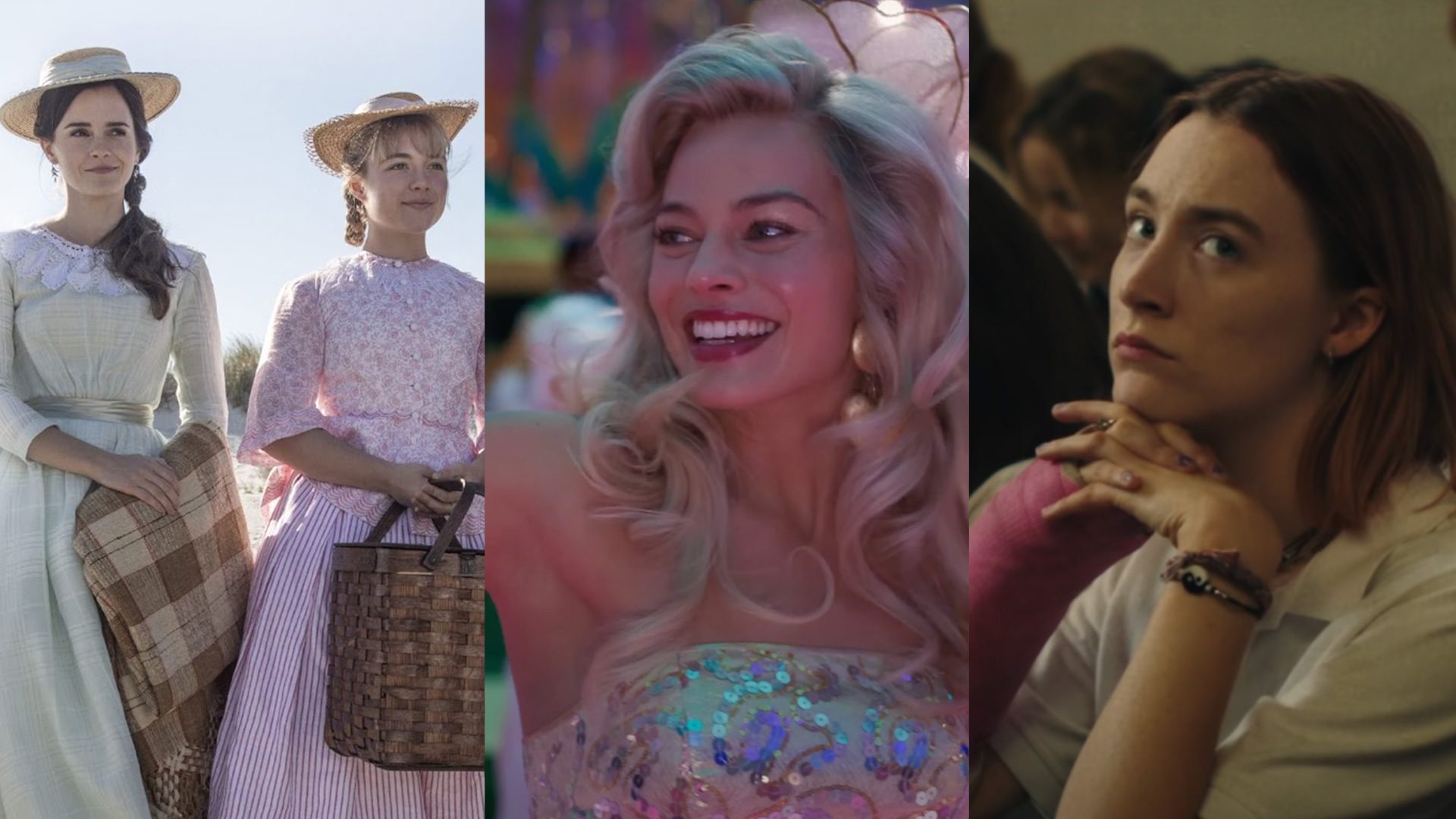SUMMARY
This is AI generated summarization, which may have errors. For context, always refer to the full article.

MANILA, Philippines – Grab a bowl of all things pink and perfect, pour in a gallon of idealism, and sprinkle in an existential crisis or two, and you’ll get Greta Gerwig’s latest box office hit, Barbie. While this is the biggest film of her career so far, this definitely isn’t her first.
I remember entering my teen years and watching Gerwig’s 2017 film Lady Bird for the first time. The movie is about a high schooler going through the normal highs and lows of adolescence. Compared to the high schools of movies like Mean Girls and Clueless that I’d seen growing up, Gerwig’s felt real and unembellished.
There were no huge confessions of love in the rain or makeovers that completely changed the way a character was perceived. Instead, there were silly school plays, failed first loves, and awkward encounters with peers.
As someone who was living in a world similar to the one the film portrayed, I was in awe of its simple beauty. It turned my own experiences into something vibrant and sweet that had a beating heart at its center, one that had so much to say about seemingly so little.
All of Gerwig’s films so far are populated by young girls — or in Barbie’s case, dolls — facing the changes that come with their impending womanhood. Each movie approaches this experience differently, but the 40-year-old director’s vision is clear in all three of them.
As she sets out to write and direct another coming-of-age tale in Netflix’s Narnia adaptations, let’s look back on the journeys of her last three films’ heroines and how their stories have shaped the narrative of growing up.
‘Lady Bird’
Gerwig’s solo directorial debut follows the life of Christine (Saoirse Ronan), also known as Lady Bird, a teenage girl living in Sacramento, California in the early 2000s.
A student at a Catholic all-girls school, she hates her hometown and spends most of her time trying to or talking about getting out. In her last year of high school, she experiences her first kiss, first love, and first heartbreak, all while saying goodbye to her past.
The crux of the film is her tumultuous relationship with her mother (Laurie Metcalf) that reaches a breaking point when Lady Bird is accepted to a university in New York without her mother’s knowledge.
When she finally gets everything she wished for, Christine realizes she must first accept the love she has harbored for both Sacramento and her mother in order to move forward with her life.
With its familiar characters and vignettes of mundane suburban life, Lady Bird gives us an honest look into the complicated realities of teenage existence. The film is Gerwig’s love letter to her hometown and the fine line between letting go and growing up.
‘Little Women’
In the seventh adaptation of Louisa May Alcott’s Little Women, Gerwig brings the lives of the March sisters to a new generation.
The film takes on the classic tale of the four sisters as they grow and change with and without one another, adding new dimensions to their relationships and family dynamics.
A noteworthy adjustment to previous film adaptations of the story is the character of Amy. Played by Florence Pugh, the youngest March sibling becomes a vivid character who understands the harsh truth of love and marriage for an average woman in 19th century America.
With Saoirse Ronan back in the lead role, Jo delivers a remarkable monologue where she confronts her internal conflict about her desire to both prove herself as more than just a woman and her feelings of loneliness. It involves the audience in her emotional journey and creates further depth in her driving motivations as a person.
Gerwig’s Little Women explores the impossible duality of womanhood and how the expectations of women do not take into account their needs, their wants, and their humanity.
‘Barbie’
Pink, pretty, and perfect, Stereotypical Barbie (Margot Robbie) is the latest addition to Gerwig’s tradition of female leads.
She is tasked with leaving Barbie Land and traveling to the Real World after she starts experiencing physical and mental changes. Here, she discovers a reality that is completely different from her own, where womanhood is a little more complicated than a bad hair day.
After saving Barbie Land from the patriarchy and restoring it to a feminine paradise, Barbie realizes that her purpose goes beyond just serving as a role model for young girls. Seeing womanhood in the Real World has pushed her past the point of no return and there is no way for her to go back to the idealistic world of her past.
In the end, she chooses to join the Real World. Barbie embraces the complexities of womanhood as she steps into a new phase of her life, opening her arms to all the good and the bad that come with her decision to grow.
In Barbie, Gerwig asks the audience to accept the entirety of womanhood with all its ups and downs in order to make the difference we want to make. We can’t fix what we can’t see and Barbie is a reminder of all the beauty that there is to save.
Coming of age on the big screen
In Lady Bird, Gerwig showed audiences the personal journey of discovering your own identity. Little Women highlighted the struggle of having your desires come into direct conflict with your idea of purpose. Finally, Barbie displayed how complicated the act of simply existing is nowadays and attempting to tick all the boxes means becoming an impossible standard.
All three films focus on separate aspects of the process, but they all revolve around the growing pains that come with maturing into adulthood. In each of them, Gerwig places life front and center, and allows the stories to fall around it.
It doesn’t matter if the film takes place in 19th century America or suburban California, tales of coming-of-age all fill an important role in the media that we consume. They place a spotlight on the central human experience of growing up and changing with the world around us.
The transition between childhood and adulthood is different for everyone, but for most of us, it forces us to confront our realities and our individual identities. It’s the time for us to discover who we are and where we fit in as people within a larger society.
Directors like Gerwig represent the diversity of this experience and the many different ways we can go through the process. Their films serve as guideposts for all the paths we can choose to take at that particular stage in our lives. They remind us that we are not alone and we were never meant to be, that everyone has, is, or will be in the same place at some point in their life — and there’s nothing wrong with that. – Rappler.com
Luna Coscolluela is a Rappler intern.
Add a comment
How does this make you feel?





![[Two Pronged] I refuse to have sex with my husband after reading his texts from other women](https://www.rappler.com/tachyon/2024/05/two-pronged-texting-husband-may-18-2024.jpg?resize=257%2C257&crop=286px%2C0px%2C720px%2C720px)
![[Two Pronged] My husband needs to hurt me before he can get aroused](https://www.rappler.com/tachyon/2024/05/two-pronged-hurting-before-sex.jpg?resize=257%2C257&crop_strategy=attention)
![[Two Pronged] In a sexless marriage for nearly 10 years since husband can’t perform](https://www.rappler.com/tachyon/2024/05/two-pronged-May-6-2024.jpg?resize=257%2C257&crop=257px%2C0px%2C720px%2C720px)

![[Two Pronged] I think my husband has depression but refuses to seek help, and now our kids are suffering](https://www.rappler.com/tachyon/2024/04/two-pronged-husband-issues.png?resize=257%2C257&crop_strategy=attention)
There are no comments yet. Add your comment to start the conversation.